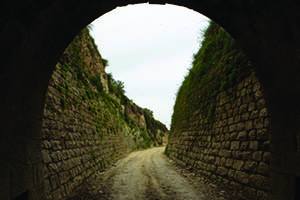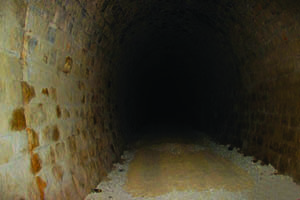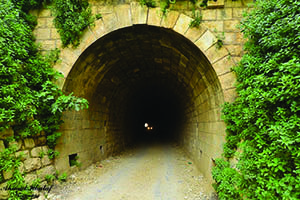History Of Rashien











While standing in front of the Ottoman "breach" of the tunnel in the town of Bala your return date to the reign of Sultan Abdul Hamid II, you are in front of a historic landmark linking the three provinces are Tulkarem, Jenin and Nablus, the purpose of its establishment at the time to be the Hejaz Railway to transport pilgrims from Palestine and the Levant to Diyar Hijazi. Director of the Ministry of Tourism and Antiquities office in Tulkarem useful Salah says that the naming of the Ottoman tunnel breach belonging to penetrate the soles of the mountain where he was introduced in 1876 and continued until the year 1909, as implemented built by members of the military who was called at the time (forced labor). He added Salah: "The inclusion of rags area on the tourist map of Palestine from within the distinctive archaeological sites that deserve attention, rehabilitation and restoration in collaboration with the local community and through the partnership with the conservative organization, especially that serves as a tunnel rags on the ruins of Khirbet ancient Roman dubbed (Rashien), the highest point in the mountainous province of Tulkarem. " Tulkarm Governor Essam Abu Bakr, who visited the Ottoman breach site stressed the importance of attention to the place and restored to preserve the historical capital of a witness to the bone where they established on the ruins of Khirbet Roman, explaining that through partnership and cooperation with municipalities and local councils concerned with the place could be the restoration of the breach and take advantage of the Youth initiative for the vanguard of the Palestinian vision Foundation for the restoration of the tunnel and then referred to the historic tourist site. The governor pointed to Abu Bakr, the need to transform the Ottoman breach of a cultural tourist site place through cooperation and partnership with the Ministry of Tourism and Antiquities and the competent authorities from the aesthetic space and its picturesque that calls to work on its restoration and preservation. The name of Bani Shamsa project manager achievement of youth in the Palestinian vision institution has stressed that through Vanguard Youth Initiative and within the self and volunteer resources and through the contribution of the local community came the restoration of the Ottoman rags initiative, explaining that the aim in the future to turn the place into a cultural forum and tourist site. For his part, Head of the Municipality of Bala Ahmed Mansour municipal cooperation in the framework of the follow-up restoration of the Ottoman rags and within the possibilities that can be provided, stressing the importance that there be a full restoration project for the support of the Ministry of Tourism and Antiquities in addition to the partnership with the village councils near the place.
1- Rashien, located on the western side of the village common between them and the villages of Bala and Kafr Rumman and territory.
2- Persian, located in the western side of liquidity, rising 300 meters above sea level. The "foundations of buildings, high thresholds for doors, the effects of the walls and the remains of a contemporary and water tanks."
3- experience of Levi, Awallenba Leo is located in the north of liquidity and a distance of two kilometers of them, in which the shrine gets visitors from neighboring villages. The family in charge with it (Al Asilym) from Nablus mentions that this shrine's (Levi) third Prophet Jacob, the sons of Leah, who he died in Egypt.
This ruined was once inhabited village. It was mentioned in the Nabulsi "Dictionary of countries" saying: "Levi, a village between Nablus and Beit She'an. The tomb of Levi, the son of Jacob ." It seems that this village remained inhabited until after the year 1101 AH. Where he visited in those trekkers year, Sheikh Abd al-Ghani al-Nabulsi mentioned:
"Then we passed the village of Lao Vzrna by the Prophet Owen peace be upon him" .otaraf Khirbet Levi nowadays as "the prophet of Owen" contains the foundations of walls, pillars and cut architecture in place.